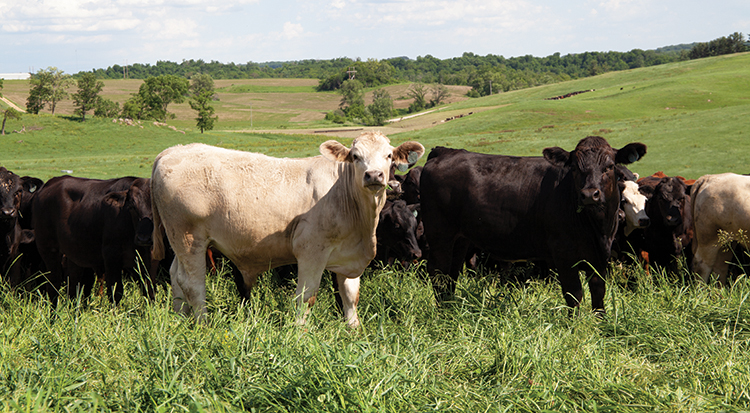
One of the common questions that comes up when planning for a grazing season is how many times a pasture can safely be grazed each year. As you might expect, the answer is, “It depends.” More than anything else, it hinges on how much it rains, but it also is a function of latitude.
My basic guideline is to plan one grazing event for each 10 inches of annual precipitation for those living in drier environments. I consider a drier environment to be one receiving less than about 25 inches annually. To determine how frequently you should graze a particular pasture, take your total annual inches of precipitation and divide it by 10. For example, if you receive 18 inches of annual precipitation, you could graze each pasture 1.8 times.
What does that even mean? How do you graze a pasture 0.8 times?
What it means is every pasture will be grazed once, and 80% of your pastures will be grazed a second time. Often, that means the first grazing is in the active growing season and the second grazing is during the dormant season. Those pastures grazed only once each year would be rotated on a five-year basis. Some pastures will get grazed twice during the growing season.
The more pastures you have to work with, the easier this plan is to accomplish. If you only have three or four pastures and your herd stays a couple months in each one, this strategy won’t make any sense at all. If you have 30 pastures, then it is very easy to implement.
More cycles with more rain
In wetter environments, considered to be those receiving more than 30 inches of precipitation, we change the planning criteria to one grazing event per 7 inches of precipitation. It takes less water to grow a ton of feed in a wetter environment versus a drier one, and less recovery time is needed for the pasture. That means more grazing cycles are possible over the course of the growing season. If you receive 35 inches of annual precipitation, you would plan for five grazing cycles.
What if you receive 56 inches of rainfall? Does that mean you should plan for eight grazing cycles?
No, it doesn’t. Believe it or not, there is a lot of research that shows there is really no pasture production benefit to additional rainfall beyond about 40 inches. With excess rainfall beyond that point, the amount of runoff typically accelerates. There are more days when the soil is saturated and deficient in oxygen, so plant growth rate slows down.
Three new leaves
Recovery time is the other side of the grazing frequency conversation. Between two successive grazing events, there must be enough time for the plant to recover from the previous grazing event. The severity of the prior grazing event and subsequent growing conditions dictate the appropriate length of the recovery period.
We can’t arbitrarily say that it must be 30 days or 100 days. We need to monitor the plant. For most cool-season grasses and some warm-season grasses, the indicator I like to use is the plant has recovered from grazing when a minimum of three new leaves have fully emerged.
I mentioned latitude was another key factor in grazing response. This is still a water-related consideration. An inch of water at Northern latitudes will grow more forage than an inch of water at a more Southern latitude. Some people have a hard time with this concept, but it is really quite simple.
Lower temperatures in the North result in reduced evaporative water loss, so there is more soil water available for plant use. Northern soils tend to have higher organic matter than Southern soils, which typically results in a higher water holding capacity.
Longer day length at the peak of the growing season means more hours of photosynthesis every day. The net result of these factors is a faster plant growth rate. For latitudes north of 44 degrees, we use 7 inches as our grazing cycle factor for dry environments and 5 inches for wet environments.
Adjust for conditions
Remember, these are just guidelines, not hard and fast rules. Growing conditions in individual seasons must always be considered. Differences in soil type and soil health also affect water relationships and growth rates. There were times in Missouri when I grazed eight or nine cycles in a year with 38 to 40 inches of annual precipitation. There have been times I have grazed a paddock under a center pivot in Idaho only twice with over 30 inches of applied water.
Guidelines like these can help you plan your grazing season, but they are not the plan.
This article appeared in the February 2021 issue of Hay & Forage Grower on page 24.
Not a subscriber? Click to get the print magazine

